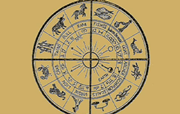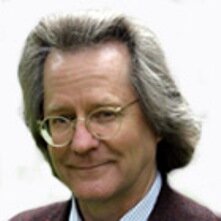 Carolyn is the leader of the imaging science team on the Cassini mission presently in orbit around Saturn, a veteran imaging scientist of the Voyager mission to the outer solar system in the 1980s, and an imaging scientist on the New Horizons mission on its way to Pluto and the Kuiper Belt. Carolyn has co-authored over 115 scientific papers on a variety of subjects in astronomy and planetary science and has become a regular public commentator on science, astronomy, planetary exploration, and the intersection of science and religion. Her popular science writings have appeared in such distinguished publications as the London Sunday Times, The New York Times, theGuardian, Astronomy magazine, the PBS and BBC websites, the Arizona Daily Star, Sky and Telescope, Scientific American, and American Scientist. Carolyn's research over the past 40 years has ranged across the outer solar system to the interstellar medium. The majority of her time has been spent studying the planetary rings encircling the giant planets and the interactions between rings and orbiting moons. In particular, she has been responsible for the discovery of one of the Neptune ring arcs; for elucidating the behavior of the non-axisymmetric rings and ring edges in the rings of Saturn, Uranus and Neptune; and for predicting in 1993 (along with then University of Arizona graduate student Mark Marley) that acoustic oscillations within the body of Saturn could produce specific wave features in Saturn's rings. This prediction was verified 20 years later using Cassini observations, resulting in the first demonstration that planetary rings could serve as a seismograph and ultimately provide the means to improve knowledge of a planet's internal structure.
Carolyn is the leader of the imaging science team on the Cassini mission presently in orbit around Saturn, a veteran imaging scientist of the Voyager mission to the outer solar system in the 1980s, and an imaging scientist on the New Horizons mission on its way to Pluto and the Kuiper Belt. Carolyn has co-authored over 115 scientific papers on a variety of subjects in astronomy and planetary science and has become a regular public commentator on science, astronomy, planetary exploration, and the intersection of science and religion. Her popular science writings have appeared in such distinguished publications as the London Sunday Times, The New York Times, theGuardian, Astronomy magazine, the PBS and BBC websites, the Arizona Daily Star, Sky and Telescope, Scientific American, and American Scientist. Carolyn's research over the past 40 years has ranged across the outer solar system to the interstellar medium. The majority of her time has been spent studying the planetary rings encircling the giant planets and the interactions between rings and orbiting moons. In particular, she has been responsible for the discovery of one of the Neptune ring arcs; for elucidating the behavior of the non-axisymmetric rings and ring edges in the rings of Saturn, Uranus and Neptune; and for predicting in 1993 (along with then University of Arizona graduate student Mark Marley) that acoustic oscillations within the body of Saturn could produce specific wave features in Saturn's rings. This prediction was verified 20 years later using Cassini observations, resulting in the first demonstration that planetary rings could serve as a seismograph and ultimately provide the means to improve knowledge of a planet's internal structure.
Carolyn has also been responsible for leading the Cassini imaging team in a host of seminal discoveries on Jupiter and its ring during Cassini's flyby of that planet in 2000/2001, and on Saturn and its rings and moons since the spacecraft's arrival there in 2004.
In recent years, Carolyn has increasingly turned her attention to the study of Enceladus, the small Saturnian moon whose south polar region was found, in images taken by her Cassini team, to be the site of over 100 tall geysers of icy particles erupting from four distinct, deep fractures crossing the region. This and other Cassini findings point to a sub-surface, salty, organics-rich sea beneath the south polar terrain as the geysers' source, making Enceladus home to the most accessible extraterrestrial habitable zone in the solar system.
 Carolyn continues to be active in the presentation of science to the public as the leader of the Cassini Imaging Team. She is the creator/editor of the team's CICLOPS website where Cassini images are posted, and she writes the site's homepage "Captain's Log" greetings to the public. Carolyn is a popular public lecturer and speaks frequently on the Cassini mission and planetary exploration in general. She has appeared at such renowned cross-disciplinary conferences as TED (2009, 2007) and PopTech (2006, 2005). She is the CEO and President of Diamond Sky Productions, LLC.
Carolyn continues to be active in the presentation of science to the public as the leader of the Cassini Imaging Team. She is the creator/editor of the team's CICLOPS website where Cassini images are posted, and she writes the site's homepage "Captain's Log" greetings to the public. Carolyn is a popular public lecturer and speaks frequently on the Cassini mission and planetary exploration in general. She has appeared at such renowned cross-disciplinary conferences as TED (2009, 2007) and PopTech (2006, 2005). She is the CEO and President of Diamond Sky Productions, LLC.
For the 1997 film Contact, based on the novel by fellow astronomer Carl Sagan, Carolyn served as the consultant on the main character, Ellie Arroway. In 2008, she was invited by J.J. Abrams, the director/producer of the 2009 release, Star Trek, to join the film's production crew as a consultant on planetary imagery.
Carolyn was responsible for the proposal to honor the late renowned planetary geologist Eugene Shoemaker by sending a portion of his cremains to the moon aboard the Lunar Prospector spacecraft. She also conceived of the epitaph, engraved on a thin brass foil, which accompanied the ashes to the moon.
Carolyn played instrumental roles in the taking of three iconic photographs of planet Earth from the outer solar system. She participated, along with Carl Sagan, in planning the 1990 "Portrait of the Planets" taken with the Voyager 1 spacecraft, which included the famous Pale Blue Dot image of Earth. Later with Cassini, she and her team took one of Cassini's most beloved images of Saturn and its rings during the planet's solar eclipse, with Earth visible in the distance. And she is the creator of The Day The Earth Smiled, an event that took place on July 19, 2013, when Cassini once again pointed sunward to image Saturn, its rings and the Earth. This time, however, a long-distance photo of Earth was taken with the full advance knowledge of members of the public, who were invited to take part in a day of reflection and celebration of humanity's place in the cosmos.
Carolyn has been the recipient of a number of awards and honors for her contributions to science and the public sphere. She is the namesake of Asteroid (7231) Porco, which was named to honor her work in planetary science. In 1999, she was selected by the London Sunday Times as one of 18 scientific leaders of the 21st century, and by Industrial Week as one of "50 Stars to Watch". In 2009, New Statesman named her as one of the "50 People Who Matter Today." In 2010 she was awarded the Carl Sagan Medal, presented by the American Astronomical Society for Excellence in the Communication of Science to the Public. And in 2012, she was named one the 25 most influential people in space by TIME magazine. Learn more about Carolyn and her latest endeavors on her website.
|
BBC News “Saturn Snapped as Earth Smiled”, an essay describing the final mosaic from The Day The Earth Smiled (2013) Read the article >> |
|
|
BBC News “Voyager: Through the Door to Eternity” (2013) Read the article >> |
|
|
PBS News “NASA’s Cassini Cameras to Provide Breathtaking Image of Earth from Saturn”, an essay describing The Day The Earth Smiled (2013) Read the article >> |
|
|
Edge “The Inductive Economy of An Elegant Idea”, an essay in response to the question, “What is your favorite deep, elegant, or beautiful explanation?” (2012) Read the article >> |
|
|
CarolynPorco.com “Abortion and the 2012 Election Season: Let’s Get the Facts Straight” (August, 2012) Read the article >> |
|
|
New Statesman “The Limits of Science” (May, 2012) Read the article >> |
|
|
New Statesman “Adventures in Wonderland” (December, 2011) Read the article [PDF] >> |
|
|
CarolynPorco.com “My Role on Star Trek 2009: Take It or Leave It” (May, 2009) Read the article >> |
|
|
Scientific American “The Restless World of Enceladus” (December, 2008) Read the article [PDF] >> |
|
|
American Scientist “Cassini: The First One Thousand Days” (July / August, 2007) Read the article >> |
|
|
The New York Times “NASA Goes Deep” (February, 2007) Read the article >> |
|
|
CelebratingSagan.com “From Carolyn Porco”, reflecting on the death of Carl Sagan (December, 2006) Read the article >> |
|
|
Edge “The Greatest Story Ever Told”, an essay in response to the question, “What is your dangerous idea?” (2006) Read the article >> |
|
|
Discover “In Dawkins’s Defense”, letter to the editor in response to the article, “Darwin’s Rottweiler” (December, 2005) Read the letter >> |
|
| Sky & Telescope’s Beautiful Universe “To the Planets with Robot Eyes” (2005) |
|
| The Planetary Report “Captain’s Log: 2004:184? (September / October, 2004) |
|
|
Astronomy “Destination Moon”, on getting Eugene Shoemaker’s ashes to the moon (February, 2000) Read the article [PDF] >> Tribute page >> |
|
|
The Guardian “First Reach for the Stars”, a review of Carl Sagan: A Life(November, 1999) Read the article >> |
 Video: World's Oldest Freethought Publication
Video: World's Oldest Freethought Publication Video: Theism is Not Rational by Aron Ra.
Video: Theism is Not Rational by Aron Ra.


 Video: A C Grayling Discusses Humanism
Video: A C Grayling Discusses Humanism